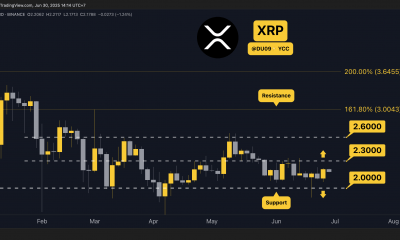Commodities
Experts named the main reasons for increase in gas prices in the European Union

Problems with the restoration of full operation of the Nord Stream pipeline continue to put pressure on gas futures prices in Europe, and this factor remains the key reason for the increase in gas prices.
Exchange gas prices in Europe began last week near $2,100 per thousand cubic meters and rose gradually. This week, the growth accelerated: Monday prices were over $2,400 per thousand cubic meters for the first time since early March, and at the opening of trading on Tuesday they were over the $2,600 mark.
Why do gas prices keep going up?
Why do gas prices keep going up? Last week, gas prices in the EU started going up again. It was caused by Gazprom’s statement that anti-Russian sanctions hamper resolution of the situation with transportation and repair of Siemens engines for the Nord Stream pipeline.
The analysts also singled out additional price growth factors. Intensification of upward gas price dynamics might have been provoked by a stoppage of annual preventive maintenance of some capacities of Norwegian gas field Troll and gas treatment unit Kollsnes from August 13 to the end of the month. This led to a fall in production capacity of 20 million cubic meters of gas during this period.
It is worth noting the atypically high temperatures in Europe, which lead, on the one hand, to a rise in demand for electricity, for air conditioning, and, on the other hand, to a reduction in hydropower generation amid droughts in some regions, notably in France.
Moreover, according to the association WindEurope, wind generation in the European Union remains below the norm, which is usually 11-20% in summer. On August 15, the share of wind power generation was 9.5% of the total. This factor could also increase demand for gas.
We previously reported that Oil prices fell again at the start of Monday’s trading.
Commodities
Oil prices rise; U.S. crude inventories plunge, Russia-Ukraine truce eyed
Commodities
India’s Reliance to stop buying Venezuelan oil over US tariffs, sources say
Commodities
Oil prices climb on Venezuela supply worries

 Forex3 years ago
Forex3 years agoForex Today: the dollar is gaining strength amid gloomy sentiment at the start of the Fed’s week

 Forex3 years ago
Forex3 years agoUnbiased review of Pocket Option broker

 Forex3 years ago
Forex3 years agoDollar to pound sterling exchange rate today: Pound plummeted to its lowest since 1985

 Forex3 years ago
Forex3 years agoHow is the Australian dollar doing today?

 Cryptocurrency3 years ago
Cryptocurrency3 years agoWhat happened in the crypto market – current events today

 World3 years ago
World3 years agoWhy are modern video games an art form?

 Commodities3 years ago
Commodities3 years agoCopper continues to fall in price on expectations of lower demand in China

 Economy3 years ago
Economy3 years agoCrude oil tankers double in price due to EU anti-Russian sanctions





























